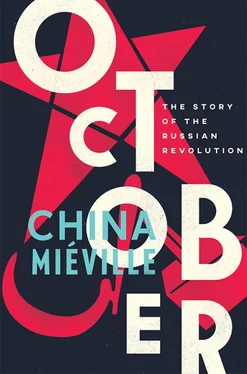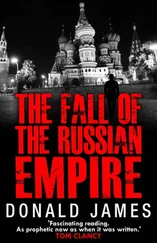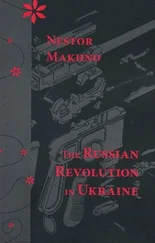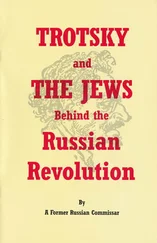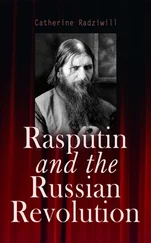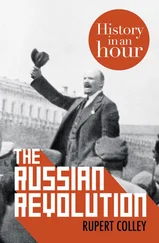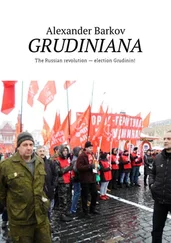Russia eyes the east, pushing into Asia, grasping at Turkestan and Pamir, as far as Korea: continuing work on the Trans-Siberian Railway, with China’s collaboration, puts it on a collision course with a similarly expansionist Japan. ‘We need’, says Prime Minister von Plehve, ‘a little victorious war to stem the tide of revolution.’ What better foil in a jingoist epic than a ‘lesser race’ such as the Japanese, whom Tsar Nicholas calls ‘monkeys’?
The 1904 Russo-Japanese War begins.
The regime, in the depths of self-delusion, expects an easy victory. Its forces, however, are incompetently led and inadequately equipped and trained, and they are catastrophically routed at Liaoyang in August 1904, Port Arthur in January 1905, Mukden in February 1905, Tsushima in May 1905. By the autumn of 1904, even the timorous liberal opposition is raising its voice. After the Liaoyang defeat the journal Osvobozhdenie , which six months before trumpeted ‘Long live the army!’, denounces the expansionism behind the war. Through regional self-government assemblies known as zemstvo s, liberals organise a ‘banquet campaign’, large lavish suppers that culminate in pointed toasts to reform. Political activism through passive–aggressive dinner parties. The following year, opposition to the regime’s trajectory reaches such a pitch that even Nicholas feels forced to make grudging concessions. But the wave of revolt stretches way beyond the liberals, into the peasantry and the restive working class.
In St Petersburg, one ‘police socialist’ union, the Assembly of Russian Factory and Workshop Workers, is led by an unusual former prison chaplain named Georgy Gapon. This fierce-faced man is, in the words of Nadezhda Krupskaya, the Bolshevik militant to whom Lenin is married, ‘by nature not a revolutionary, but a sly priest… ready to accept any compromises’. Father Gapon nevertheless heads a social ministry, inflected by Tolstoy’s quasi-mystical concern for the poor. His theology – devout, ethical, quietist and reformist all at once – is confused but sincere.
In late 1904, four workers at the city’s colossal Putilov metallurgy and machine-building plant – which employs more than 12,000 people – get the sack. At sympathy meetings organised by their workmates, an appalled Gapon finds leaflets calling for the tsar’s overthrow. He rips them to pieces: that is well beyond his mission. But to the workers’ petition calling for the men’s reinstatement he adds demands for a wage increase, improved sanitation, an eight-hour day. Radicals to his left add further calls, resonating far beyond sectional interests: for the freedom of assembly and of the press, the separation of church and state, an end to the Russo-Japanese War, a Constituent Assembly.
On 3 January 1905, a city-wide strike is declared. Very soon, between 100,000 and 150,000 people are out.
Sunday 9 January: protestors gather in the freezing pre-dawn darkness. A numerous group from the working-class Vyborg district sets out for the monarch’s sumptuous residence, the Winter Palace, whose windows survey the confluence of the two Nevas, the cathedral in the Peter and Paul Fortress, the rostral columns at the tip of Vasilievsky Island, at the heart of the city.
Deep water, frozen solid. From its north bank, the marchers descend onto the Neva ice. Tens of thousands of workers with their families, shivering in threadbare clothes, begin to trudge. They hold icons and crosses. They chant and sing hymns. At their head, Father Gapon in his robes, bearing an entreaty to the tsar. ‘Lord’, it beseeches, in exquisite combination of the lickspittle and the radical. It begs ‘little Father’ Nicholas to grant ‘truth and protection’ from the ‘capitalist exploiters’.
Opposition like this could easily be placated. But these authorities are cruel as well as stupid. Thousands of troops are lined up and expectant on the ice.
It is mid-morning as the marchers approach. Cossacks draw their sabres and gallop at them. The crowd scatters in confusion. The tsar’s forces face them down. The people do not disperse. The troops raise their guns and begin to fire. The Cossacks flail nagaikas , their vicious whips. Gore melts the frost. The desperate people scream and slip and fall.
When the carnage comes to an end, as many as 1,500 people lie dead in the drifts. This is Bloody Sunday.
The impact is incalculable. It unleashes a sea change in popular attitudes. That evening, Gapon, his world view shattered, ‘red hot’, Krupskaya will recall, ‘from the breath of the revolution’, fulminates to a crowd of survivors: ‘We have no Tsar!’
That day accelerates revolution. Information travels the sprawl and spread of the railway lines, racing across its territories in the company of the trains, and it brings fury with it.
Strikes rage across the empire. They are embraced by groups new to such actions – clerks, hotel maids, cab drivers. More confrontations follow, and more deaths – 500 in Lodz, ninety in Warsaw. In May, a mutiny over spoiled meat shakes the battleship Knaz-Potemkin . Further revolts come in November, in Kronstadt and Sebastopol.
The regime is frantic. It experiments with combinations of concession and repression. And the revolution provokes not only bloody official crackdowns, but the traditional ultra-right sadism quasi-sanctioned by the state.
Only two years previously, the Bessarabian city of Kishinev suffered the first pogrom of the twentieth century. For thirty-six hours, marauding bands, untroubled by the police and blessed by Orthodox bishops, practised butchery. Jewish adults and children were tortured, raped, mutilated, killed. The tongue of a toddler was cut out. Murderers emptied out the disembowelled bodies of their victims and stuffed them with feathers. Forty-one people died, almost 500 were wounded, and, a journalist observed, most Gentile citizens expressed ‘neither regret nor remorse’.
Amid the anguish, many claimed that the Kishinev Jews had not resisted hard enough. This supposed ‘shame of passivity’ provoked soul-searching among Jewish radicals. So now, in April 1905, when the Ukrainian Jews of Zhitomir get word of an impending attack, the response is defiant: ‘We will show that Zhitomir is not Kishinev.’ And when, indeed, they fight back against the murderers, limiting damage and death, the Zhitomir defenders inspire the Jewish Bund to declare that ‘the times of Kishinev have gone forever’.
Almost instantly, this proves horrifyingly wrong.
Prominent in the Zhitomir attack were the Black Hundreds, an umbrella name for various cells of proto-fascist ultra-reactionaries, which sprang up out of authoritarian outrage at the 1905 revolution. They are apt to sprinkle a few populist calls, such as for land redistribution, atop fervour for an autocratic tsar – Nicholas II is an honorary member – and murderous spite against non-Russians, most particularly Jews. They have street-fighting thugs, and plenty of friends in high places, parliamentary deputies like Alexander Dubrovin and Vladimir Purishkevich. Dubrovin is leader of the Union of the Russian People (URP), an advocate of extreme racist violence, a doctor who gave up medicine to fight the creep of liberalism. Purishkevich is the URP’s deputy chair. Flamboyant, fearless and eccentric to the point of derangement, characterised by the author Sholem Aleichem as an ‘atrocious villain’ and ‘high-strutting cockerel’, he is a devout believer in God-sanctioned autocracy. Indeed, some Black Hundreds – such as the sect known as the Ioannity – spice their race-hate with ecstatic religiosity, directing the enthusiasms of Orthodoxy against ‘Christ-killers’, fever dreams of blood-drinking Jews, icons and eschatology and mysticism in the service of depravity.
Читать дальше
